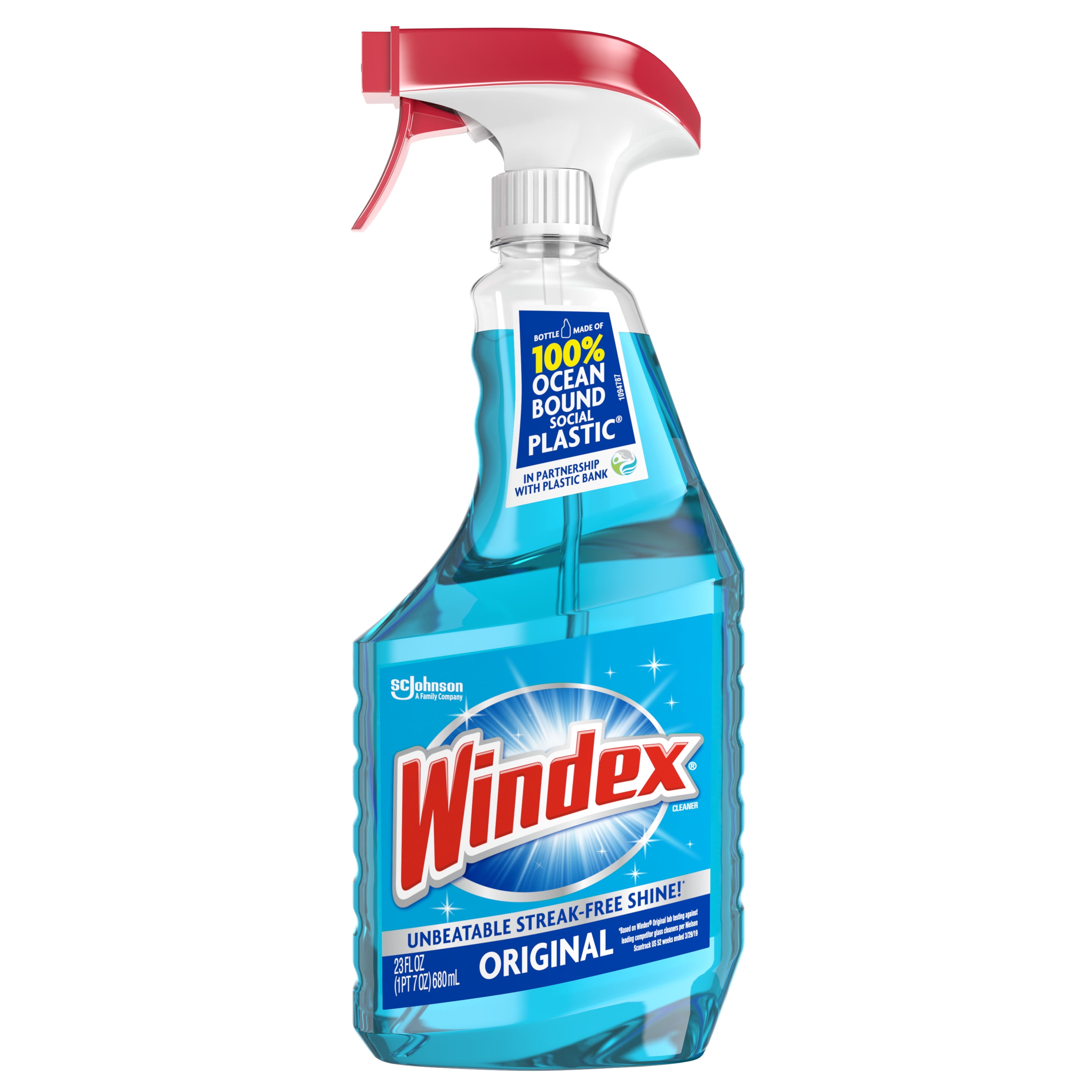
Windex's main competitor in the window cleaning market is Glass Plus, a glass cleaning product produced by Reckitt Benckiser, which Windex's current owner S. An alternative variant also for household use cites water, hexoxyethanol, isopropanolamine, ammonium hydroxide, sodium C10-C16 alkylbenzenesulfonate, lauramine oxide, sodium xylene sulfonate, colorants, and fragrances.

Johnson website lists Windex's ingredients as water, 2-hexoxyethanol, isopropanolamine, sodium dodecylbenzene sulfonate, lauramine oxide, ammonium hydroxide, fragrance, and Liquitint sky blue dye. Johnson started publishing ingredients for all of its products, including Windex. In 1989, Windex was a 5% ammonia solution. This formula was not only inexpensive to manufacture but allowed the product to be packaged in glass bottles and dispensed with a plastic sprayer. patent #3,463,735 for a glass cleaning composition, listing example formulae, one of which is 4.0% isopropyl alcohol, 1% ethylene glycol monobutyl ether, 0.1% sodium lauryl sulfate (a surfactant), calcium (Ca) 0.01%, tetrasodium pyrophosphate (a water softener), 0.05% of 28% ammonia, 1% of a dye solution, and 0.01% perfume. Today, there are varieties marketed in several colors (ocean fresh blue, sunshine lemon, and citrus orange) and fragrances (spring bouquet, ocean mist, lavender, and tea tree), with a number of additives such as vinegar, lemon, lime, or orange juice.

Johnson acquired Windex in 1993 and has been manufacturing it since.

Windex is an American brand of glass and hard-surface cleaners -originally in glass containers, later in plastic ones.ĭrackett sold the Windex brand to Bristol-Meyers in 1965. United States, Canada, Germany, Australia, Sweden


 0 kommentar(er)
0 kommentar(er)
